Auctions are very common when it comes to the buying and selling of wildlife. Helicon holds one to two boma auctions every year. Boma auctions are an important social event for the wildlife industry. The prices that are being paid for wild animals vary from region to region, even within the same province, often depending on their type, sex and age. The reputation of the seller and the physical condition of the animals are major price determinants.
For boma auctions, once the animals are captured, they are transported to a central sales boma and kept in pens before being sold. This is because it takes a few days to catch different species, therefore their time in the pens are extended until the day of the auction. The animals are kept in the pens for the shortest time possible. If kept too long, it can lead to stress and injury causing high mortalities. On the day of the auction, prospective buyers can view and evaluate the animals on offer before the auctions starts. This is just a brief summary to introduce you to how wildlife auctions work.
When it comes to Helicon’s auctions, we ensure safe practices to keep injuries and mortalities to a minimum. We usually start catching a week before the day of the auction. This gives us enough time to move to different farms to acquire the different species needed.
For our previous auction, a wide variety of species were caught. We mass captured the animals with the use of a helicopter for mass capture of the animals. Net guns were used on Red hartebeest as they avoided and ran past the capture boma with the helicopter.
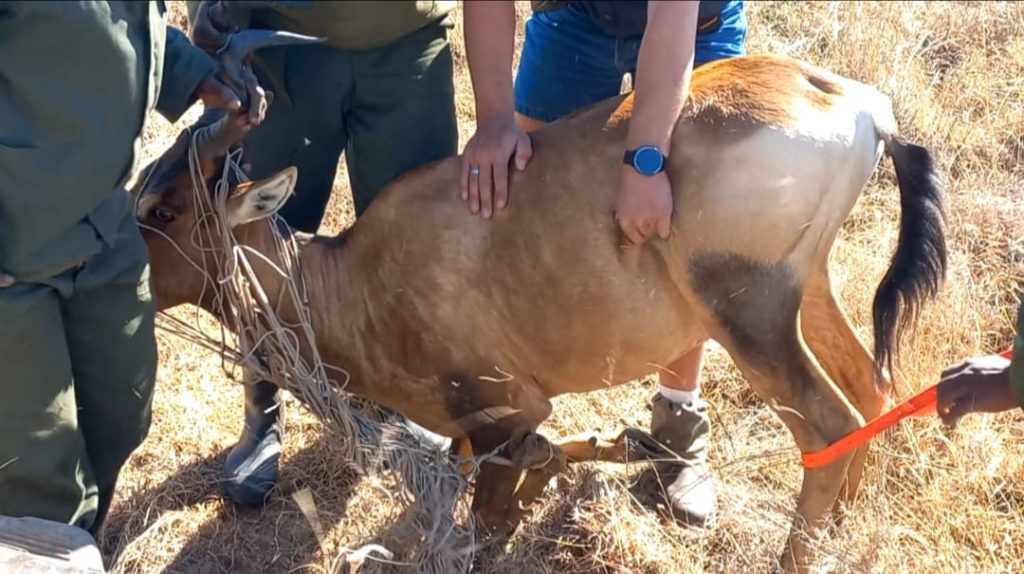
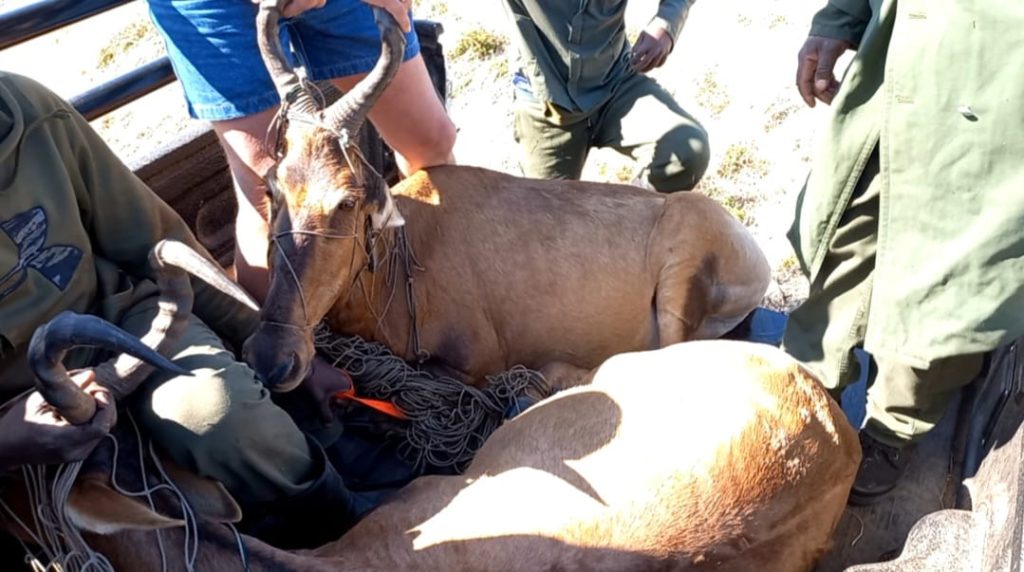
Dart guns were used on Impala rams as they are a more difficult species to catch with the helicopter. Zebras and gemsbuck were also darted.
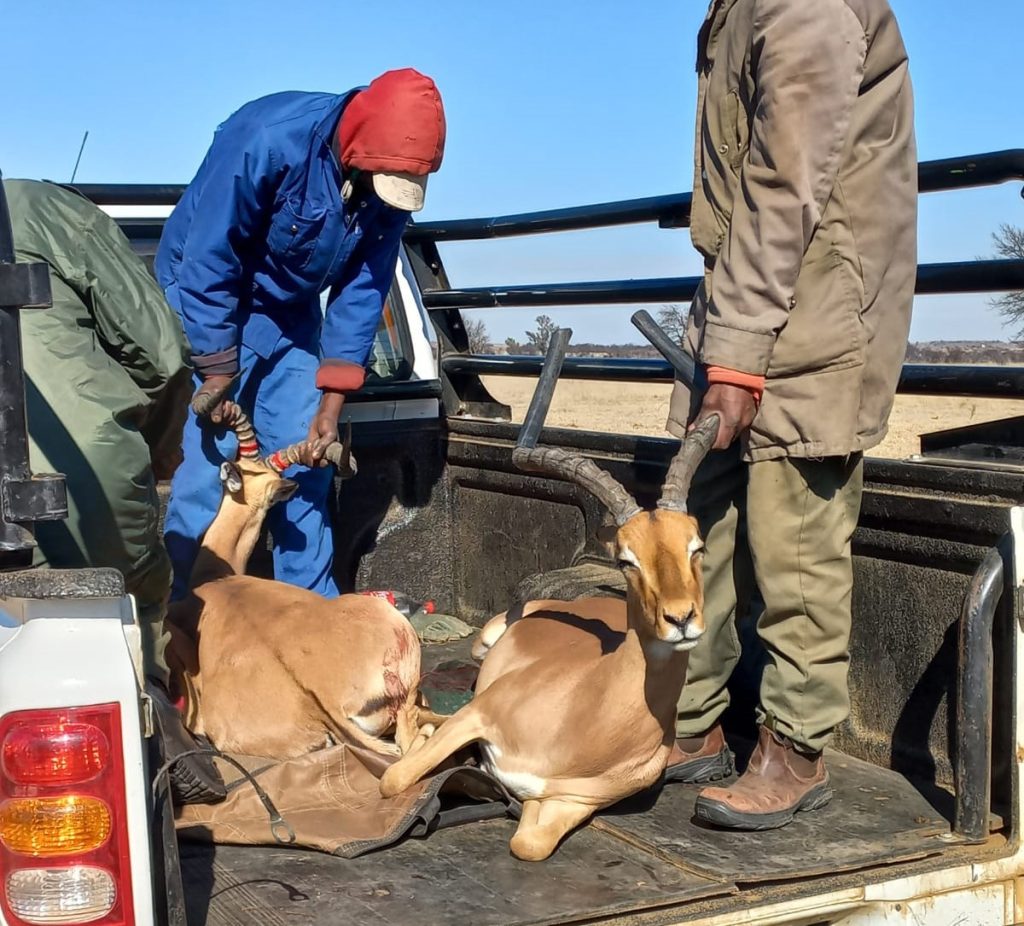
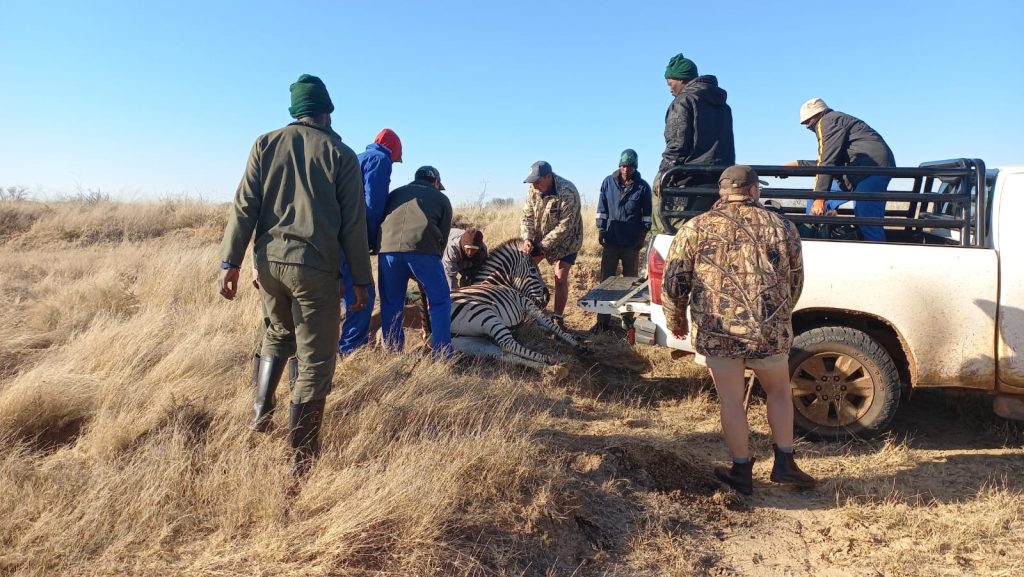
Darting occurs from the helicopter by an experienced veterinarian (this can be a pricy option to catch wildlife), once darted, it takes a few minutes for the drugs to take effect on the animals. Once the tranquilizer is in their blood stream, they become approachable as they are unaware of their surroundings. Our staff holds them by the horns, load them onto a stretcher and lift the animal onto the back of a bakkie.

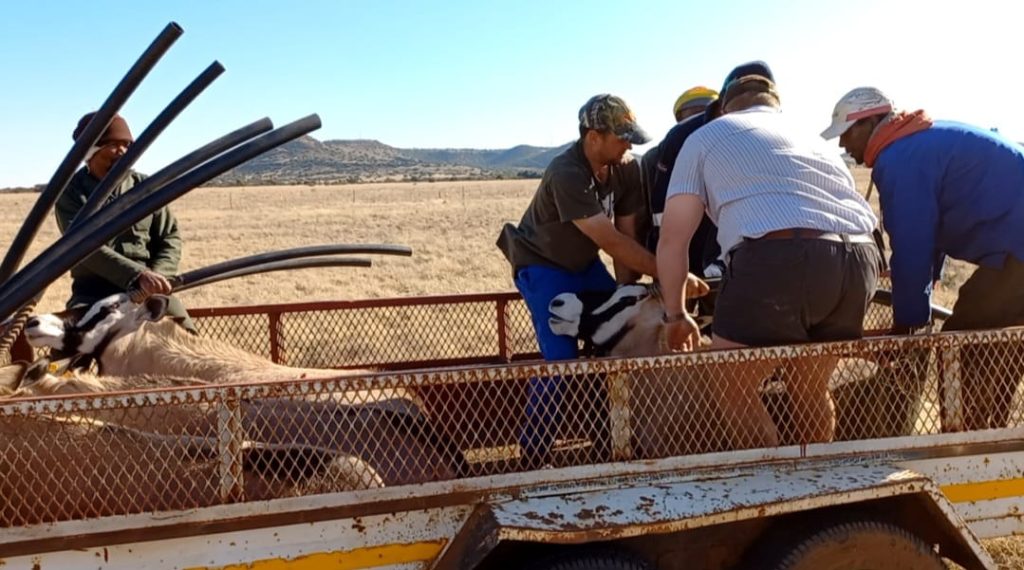
Thereafter, we load them onto the trucks, and give them a sedative to make the process less stressful and keep them calm. Once the trucks are full, the animals are transported to the holding pens and we offload them into the correct pens. Once the auction is finished, we go back to the holding pens and start loading the animals back onto the trucks and transport them to the buyer’s destination.
There are always risks involved when holding boma auctions, but it is the most popular form of auction in the wildlife industry. It also gives the buyer a chance to view the animal upfront before buying. In my experience, being part of the “behind the scenes’ of catching wildlife for auctions is exciting an unpredictable. As a wildlife enthusiast, I can honestly say, it is the most rewarding and best experience of my life.